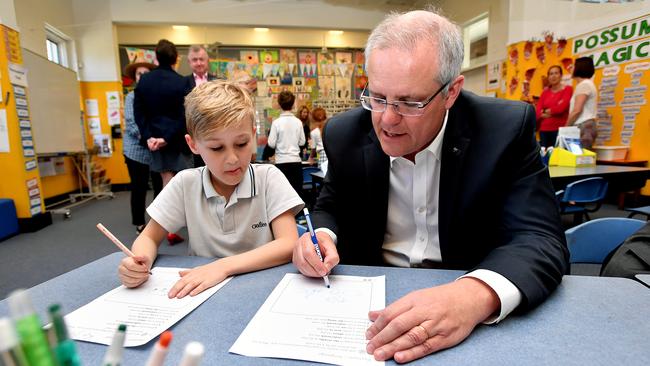Why are Australia’s PISA results so bad? Blame mediocre education standards and poor teaching
An international student ranking has revealed Australia has gone backwards on the numeracy and literacy scale. We should expect more than mediocrity from our students, writes Blaise Joseph.
When did we become a nation satisfied with mediocrity?
The latest international education rankings confirm that we’ve entrenched low expectations in our school system, especially in maths and science. And this has been particularly harmful to children from disadvantaged backgrounds.
The Programme for International School Assessment (PISA) results show Australia is going backwards — compared both to our previous achievement and to other countries.
Based on test results from a representative sample of 15-year-olds, 1 in 5 Australian students are below the international baseline standards for reading, maths, and science. And it’s even worse for Indigenous students, with more than 40 per cent not meeting the minimum standards.

Our proportion of low achievers has risen substantially since the PISA tests were first introduced in 2000.
This has happened because we’ve lowered expectations in education. Instead of telling kids that it’s okay to fail as long as you focus on improving, we have come to accept poor results and recoil from telling anyone they’ve failed.
Just look at the appallingly low national minimum standards on NAPLAN tests: more than 90 per cent of Australian students apparently reach the literacy and numeracy standards (cue incredulous but despairing laughter).
RELATED: Report finds only 45 per cent of Australian teachers were prepared for class
Or check out the mediocre standards for intake into university teacher education programs; evidenced by one in 10 prospective new teachers being unable to pass an incredibly basic literacy and numeracy test.
Or see the low expectations of student behaviour and school discipline, as reflected in Australia’s high rates of misbehaviour on international datasets.
We can’t blame a rising inequity between rich and poor students for the decline in Australia’s performance.
Among students from all socio-economic backgrounds, average achievement has declined, there are more low performers and fewer high performers. So the negative trend is affecting all Australian students, regardless of levels of advantage.
Don’t forget: this decline in results continues despite significant increases in school spending over many years. Taxpayer funding for schools has gone up in all sectors, well above inflation and enrolments growth, and become more concentrated on schools in disadvantaged areas.

So who’s to blame for our lower standards? Ultimately, state and territory governments make all the significant education decisions. They run the schools, employ the staff, control the teacher accreditation, and can veto most commonwealth initiatives. We should demand that they lift their game.
If we want to improve student achievement — to the extent that we can compete with the world’s top-performing school systems, such as Singapore, Estonia, and some parts of China — then we need to lift our expectations. That means coming to grips with the harsh reality that many Australian students have unacceptable levels of literacy and numeracy, often due to inadequate teaching. Low-quality teaching and education fads hurt all students, but they have a larger negative impact on disadvantaged children.
RELATED: New report suggests principals should be paid based on disciplinary record
We should demand higher standards from teacher education programs. This means raising the benchmark required to get into teaching and ensuring that essential, evidence-based content is covered rigorously in the university degrees.
The NAPLAN minimum standards must be raised, so they are more in line with international benchmarks. We can and should expect much more of Australian students.
And we have to ensure school systems and schools have high expectations of student behaviour, building positive school cultures with fewer rowdy classes.
This isn’t a ‘back to basics’ approach — it’s just following the evidence where it leads.
If we simply follow more fads in response to our worsening results, then it’s our disadvantaged students who will suffer most.
Blaise Joseph is an education research fellow at The Centre for Independent Studies and author of ‘Overcoming the Odds: A study of Australia’s top-performing disadvantaged schools’.
